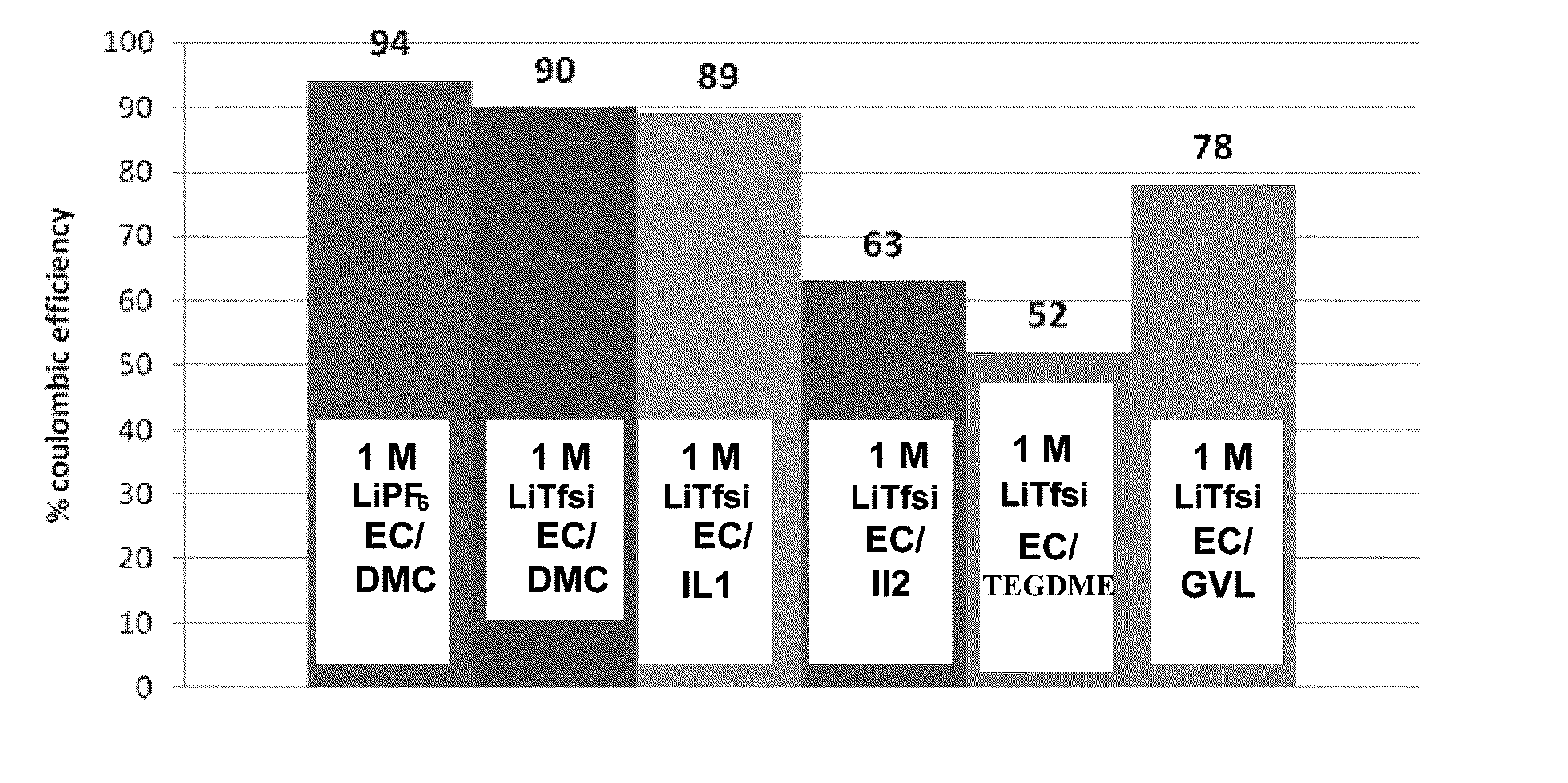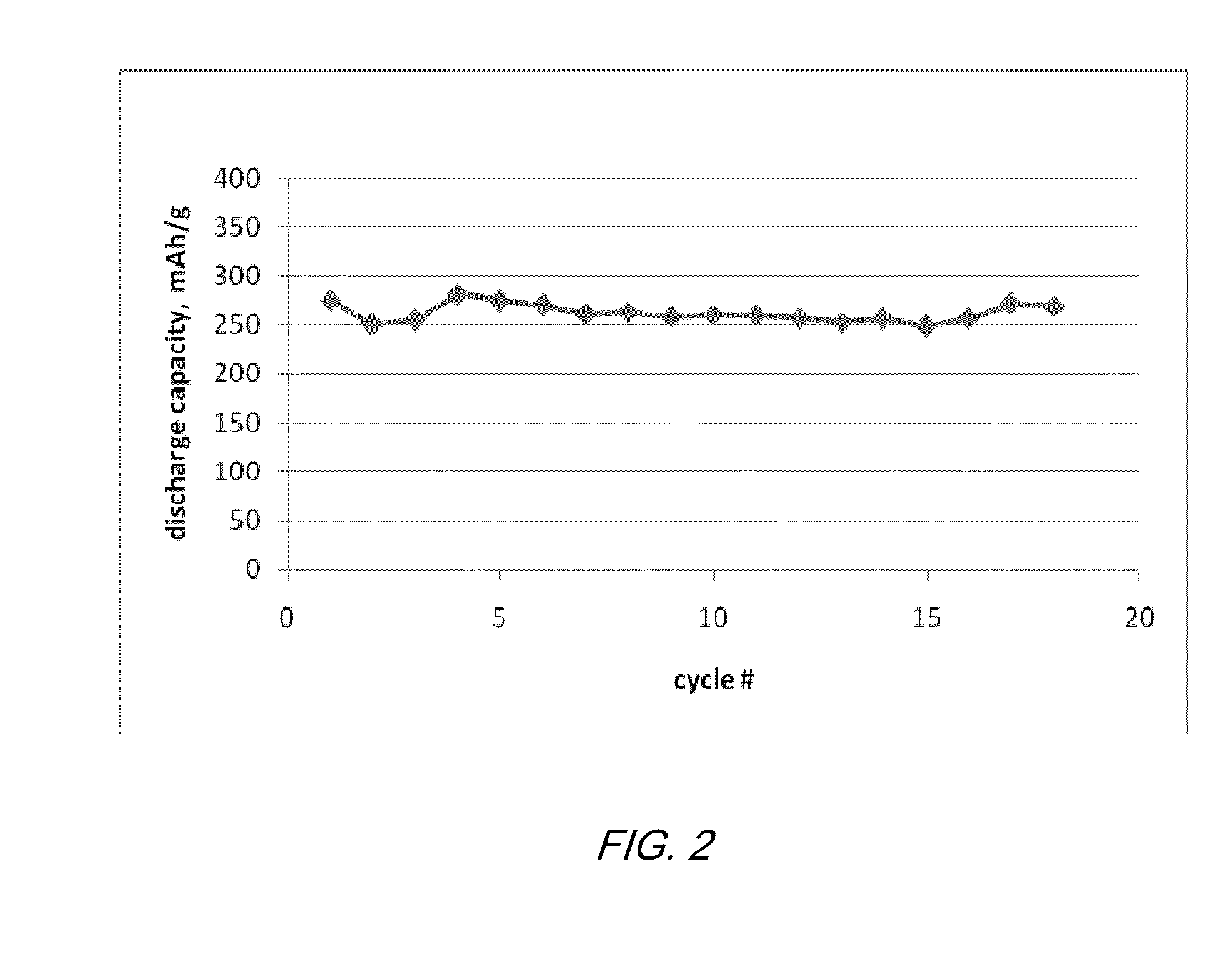Electrochemical cells with ionic liquid electrolyte
a technology of ionic liquid and electrolyte, which is applied in the direction of non-aqueous electrolyte cells, cell components, secondary cell details, etc., can solve the problems of small stability window, achieve wide electrochemical stability window, achieve high thermal stability, and obtain very high electrolyte concentration at ease
- Summary
- Abstract
- Description
- Claims
- Application Information
AI Technical Summary
Benefits of technology
Problems solved by technology
Method used
Image
Examples
example 1
Production of a Negative Electrode
[0093]Ninety-two parts by weight of carbon mesosphere as the anode electrode active material, 1 part Super P Li as the conductive material, 107 parts by weight of a solution of 7 parts Kynar 301F, 0.4 parts oxalic acid and 99.6 parts N-methyl-2-pyrrolidinone were stirred and mixed together giving an anode electrode composition. This anode electrode composition was applied onto copper foil using a vacuum table and a doctor blade, then initially dried on a hotplate and followed by drying in an oven at 110° C. under vacuum for 2 hours and roll-pressed to an electrode with a thickness of about 1 micron to about 100 microns, thereby forming a negative electrode. Preferably, the thickness is about 49 microns.
example 2
Production of a Positive Electrode
[0094]Ninety-two parts by weight of lithium nickel manganese cobalt oxide as the cathode electrode active material, 4 part Super P Li as the conductive material, 104 parts by weight of a solution of 7 parts Kynar 301F and 100 parts N-methyl-2-pyrrolidinone were stirred and mixed together giving a cathode electrode composition. This cathode electrode composition was applied onto 50 micron graphite sheet using a vacuum table and a doctor blade, then initially dried on a hotplate and followed by drying in an oven at 110° C. under vacuum for 2 hours and roll-pressed to an electrode with thickness of about 1 micron to about 100 microns microns, thereby forming a positive electrode. Preferably, the thickness is about 41 microns
example 3
Preparation of Electrolyte Solution
[0095]An electrolyte solution was prepared by dissolving 28.69 g of lithium bis(trifluoromethane)imide in a solution of 50 parts by weight of ethylene carbonate and 50 parts 1-butyl-1-methyl-pyrrolidinium bis(trifluoromethane)imide that is sufficient to prepare a total of 100 ml of electrolyte solution.
PUM
| Property | Measurement | Unit |
|---|---|---|
| electronic conductivity | aaaaa | aaaaa |
| electronic conductivity | aaaaa | aaaaa |
| electronic conductivity | aaaaa | aaaaa |
Abstract
Description
Claims
Application Information
 Login to View More
Login to View More - R&D
- Intellectual Property
- Life Sciences
- Materials
- Tech Scout
- Unparalleled Data Quality
- Higher Quality Content
- 60% Fewer Hallucinations
Browse by: Latest US Patents, China's latest patents, Technical Efficacy Thesaurus, Application Domain, Technology Topic, Popular Technical Reports.
© 2025 PatSnap. All rights reserved.Legal|Privacy policy|Modern Slavery Act Transparency Statement|Sitemap|About US| Contact US: help@patsnap.com



